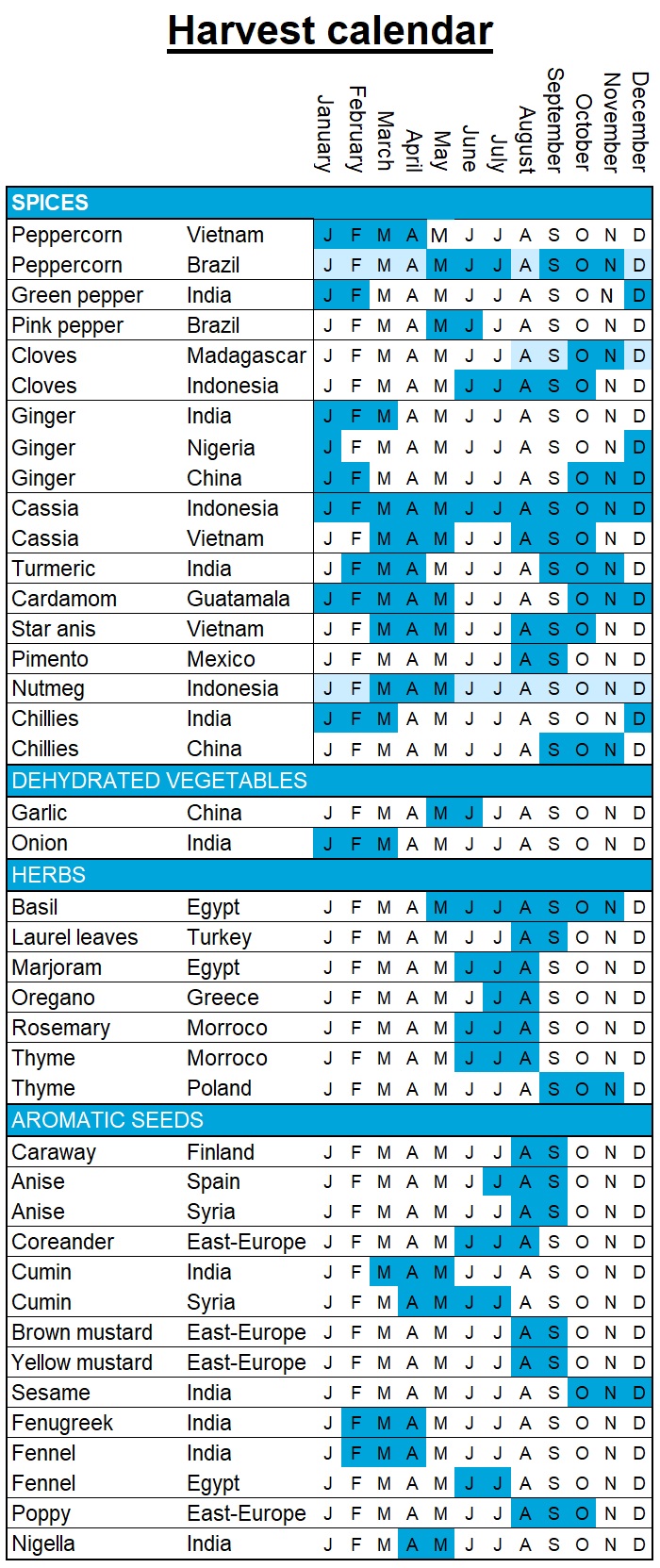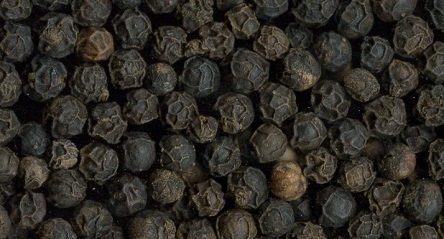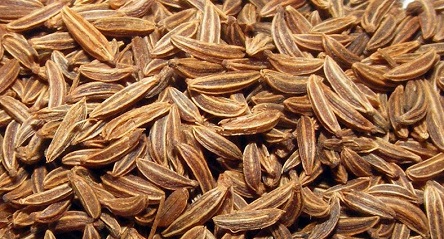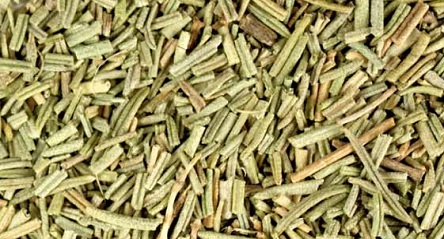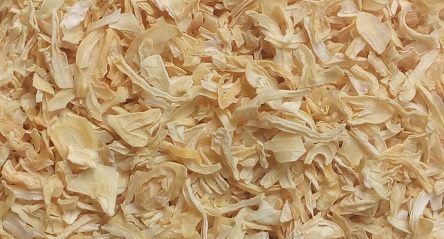Market update
-
18 December 2025 Open or Close
During 2025 pepper prices were fairly stable with only a brief dip at the end of July. Even in December prices are moving sideways although the new Vietnam harvest in Vietnam will be available from January onwards. We therefore do not expect a major price correction. Perhaps we may see little lower prices towards the end of Q1 or the beginning of Q2. Time will tell.
Despite climate change, the ongoing war in Ukraine, U.S. trade tariffs, and so on, prices of most spices fluctuated only within a narrow range. The only exceptions were cumin seeds whose prices have fallen by around 40 % since the beginning of the year, and oregano, whose prices nearly doubled following a poor harvest in Turkey.
Having said all this, we would like to thank you for the cooperation and your support during the past year. We wish you a merry Christmas and a happy, healthy, and successful 2026 !
(from December 25th up to January 2nd our office will be closed)
-
10 December 2025 Open or Close
Although pepper prices have remained stable over the past few weeks, the question remains as to how long this will continue. Lower harvests in recent years have resulted in a significant decline in carryover stocks. The outlook for the 2026 harvest in Vietnam looks poor again, and recent flooding in key growing areas has further worsened the situation. The 2026 TET holidays run from 14 to 22 February. This may cause a slight delay to the harvest.
The area under cultivation for Indian chillies is expected to decline by 40%. Prices were very low in 2025, resulting in significantly less planting this year. However, cold stores are full and stock levels are declining slowly. Many farmers are therefore choosing to hold onto their produce in anticipation of better prices, which have already started to rise slightly. Meanwhile, prices for Chinese chillies appear to be stable.
Deliveries of mustard and coriander seeds from Ukraine remain difficult due to Russian attacks on the energy network, pushing prices up slightly. Unfortunately, this situation will persist until a ceasefire comes into effect.
-
24 November 2025 Open or Close
Now that the US has lifted import duties on spices (effective 13 November 2025), the market should “normalise”. However, this does not mean that we will see a stable market. Pepper prices have risen over the past week due to concerns about the harvest in Vietnam. Heavy rainfall in the highlands last week caused severel floodings in the provinces of Gia Lai and Dak Lak. Other provinces have also been affected.
Prices for Syrian nigella seeds have risen and stocks are limited. Farmers and exporters are very reluctant to sell them. Prices for Syrian material are now around 10% higher than at the start of October. Indian IPM material is no longer being offered and remaining quantities are minimal. The next harvest will not be available until April 2026.
The clove harvest in Madagascar is now in full swing. Both the size and quality of this year's crop are reportedly good. Consequently, prices came down somewhat. SPOT availability remains tight, this is expected to continue in the coming months.
Prices for Greek and Turkish oregano appear to have stabilised. However, due to the scarcity of “pure” material with a high oil content, further price increases cannot be ruled out.
-
12 November 2025 Open or Close
The price of Vietnamese pepper continues to fluctuate within a small range. This is notable given that, as of 1 July, the Vietnamese government introduced a 5% VAT law. This has had a significant impact on trade, as exporters must pay this tax upfront and then apply for a refund, a process which takes months. Smaller exporters without financial resources are particularly affected. The number of exporters is likely to decrease. (See Annex.)
The year-on-year carryover of Vietnamese pepper in 2025 will be lower again. Although exports have only dropped marginally, this is mainly thanks to increased imports from Brazil. Pepper production in Vietnam has fallen by over 30% in the last 6 years.
Farmers worldwide have to deal with abnormal weather conditions. Unseasonal heavy rainfall in north-west India has delayed the sowing of raw onions. The outlook for the 2026 crop remains uncertain, and some farmers may switch to growing other crops, which would reduce the total area under cultivation. Similarly, the unseasonal rains have discouraged Indian farmers from growing cumin seeds, leading to expectations of a 15–20% reduction in acreage for the new crop.
Turmeric cultivation area in India has increased, but carry-over stocks remain low due to strong demand. The current crop is in good condition and prices may ease next year. -
22 October 2025 Open or Close
Pepper prices have remained stable over the past two weeks. Inventories in Vietnam are low, with no selling pressure at all. Tropical Storm Fengshen is expected to reach central Vietnam on Thursday, but its impact on the pepper crop will likely be minimal.
The price of Mexican pimento has increased due to bad weather and flooding hampering the crop and drying process.
The clove harvest in Madagascar has begun and is looking promising. Indian importers have stepped in and are buying aggressively. Once they have met local demand, the market may ease and prices could fall slightly.
Climate issues in North Africa, Turkey and the Middle East have led to disappointing crops of oregano, thyme and rosemary, amongst others. The prices of these commodities have recently increased significantly.
-
8 October 2025 Open or Close
Pepper prices have remained stable over the past two weeks. Is this the calm before the storm? That is the key question. It could well be. This week, we spoke to various Vietnamese exporters at Anuga. They all believe that next year's harvest will be smaller. They also agree that carryover stocks will be smaller than in previous years. In the short term, there appears to be sufficient pepper available. Prices in Brazil are comparable to those in Vietnam. High-level talks are being held to normalize US import tariffs to some extent which, if successful, could give the market a boost. In addition, China is currently enjoying the Golden Week holiday and will reopen on October 10. Although speculative purchases will be low at current price levels, they are likely to return to the market. We believe that interesting times lie ahead.
The clove harvest has begun in Madagascar. Adverse weather conditions are hampering the drying and processing of the cloves, which may affect their quality. Additionally, the country is experiencing significant social unrest, the consequences of which remain unclear. For now, the crop appears to be good, with prices somewhat lower than last year. The first shipments will not be sent until the end of October, so they will not be available here until early 2026.
The US dollar is slightly stronger this week. It is likely that the Fed will lower interest rates in the coming months. We therefore expect the exchange rate to fall somewhat further towards the end of 2025.
-
24 September 2025 Open or Close
There is not much to report on the pepper market. Prices have barely moved over the past fortnight. However, the fundamentals remain strong.
Various disruptions are causing longer shipping times and shortages in the spot market for multiple products. This makes it particularly challenging to maintain adequate stock levels.
As for Chinese garlic we received following info : 'The yield and planting area have increased compared to 2024. Fresh garlic production this year reached 5,070,000 MT.' The price price of fresh garlic is coming down somewhat. However, the price of dry garlic flakes has remained stable. In previous years, speculators often drove up prices, but they are less active this year. Most speculators are using their own funds and do not want to sell unless it is profitable.’ For the coming months we anticipate the market moving sideways. Possibly a little lower towards the end of the year.
Imports to the USA have decreased as a result of its new trade policy. The number of containers (TEU) imported is expected to drop by around 15% during Q4 compared to the same period last year. Prior to the imposition of new import tariffs, US importers (including spice importers) created buffer stocks. Once these stocks have been depleted, importers will become more active again.
-
9 September 2025 Open or Close
Now that the holidays are behind us, the market is clearly picking up with good overall demand.
Over the past two weeks, pepper prices have risen steadily. This week, however, the market seems to be taking a break with prices easing a little.
We believe this is only temporary. Supply remains tight with farmers and wholesalers selling sparingly, thus contributing to a stable market. Inventories are low as production is falling behind demand again this year. Fundamentals are firm. Rumours are circulating that the US may lower import duties on spices. This could be the trigger needed for the market to improve further.
The new crop pimento is now becoming available. Prices of origin seem a little lower than last year. By late September things should become clearer.
As for Indian produce the coming months will be interesting as Indian farmers will soon decide which crops to sow. Prices for Nigella and Turmeric remain relatively high, while Cumin, Fennel, and Chilli are currently trading at somewhat lower levels.
Oregano prices are climbing steadily. Poor weather conditions in both Turkey and Greece have led to significantly reduced harvests. Once again, sourcing PA-compliant material remains a big challenge. Low-priced offers mostly turn out to be non-compliant.
-
1 August 2025 Open or Close
During July pepper prices fluctuated within a narrow range, with farmer gate prices in Vietnam hovering around 140,000 VND/kg. In Brazil, the new crop has started in Espirito Santo and looks promising. The recently newly installed import tariffs by the USA seem to be in favor of Vietnam giving prices of this origin a boost. Overall supply and demand seem to be in balance for the short term.
In recent weeks, we have seen a significant increase in the price of herbs (mainly rosemary, oregano and thyme). This upward trend is primarily driven by unusual weather patterns affecting key growing regions. Extended periods of drought and heatwaves, as well as an unusually cold spring, have impacted crop development and harvests, leading to tighter supply conditions. We do not foresee any short-term price relief.
The caraway harvest is about to begin. Despite the record-breaking temperatures in Finland, we expect the caraway market to remain stable.
Early indicators from the upcoming pimento harvest look promising. Although it is still too early for firm projections, initial field reports suggest a potentially good yield. If current conditions persist, we could see some price reductions for pimento as soon as the new crop arrives in Europe in Q4.
The exchange rate USD / EURO picked up in the past few days and now stands at USD 1.143 - nearly 3% higher than a week ago.
-
9 July 2025 Open or Close
Pepper prices have been quite volatile in recent weeks. In the second half of June, the origin price fell to just below VND 130K per kg, before rising sharply again to VND 145K per kg. In recent days, the price has stabilised at around VND 140K. Fickle US tariff policy is currently driving sentiment. Fundamentals remain firm.
Turmeric availability could tighten towards the end of the year, pushing prices up. Indian farmers seem more interested in growing turmeric this year, but it is too early to be sure about this. A more precise forecast can only be given in late 2025. The new crop will not arrive in Europe until March/April 2026.
Prices of dehydrated onions spiked briefly after news of unseasonal rains in India, but have since stabilised and even decreased slightly. The market seems to have overreacted somewhat.
Current chilli prices are rather low in both India and China. Cold storage facilities are full and less planting is expected due to poor farmer interest for the next season.
Current mustard seed prices seem attractive, with most origins expecting an upward trend in prices in the coming season. There are also no signs of downward pressure on coriander seed prices. The market remains balanced and stable.
The US dollar weakened due to concerns over rising national debt and tariff threats.
-
17 June 2025 Open or Close
Besides all the issues that were already in play, now the escalating conflict between Israel and Iran is also contributing to the current negative sentiment in the market.
Over the past two weeks, the price of Vietnamese pepper has gradually dropped to around VND 135,000/kg (farm grade). This equates to approximately USD 6,450/t FOB for cleaned and sterilised material. With a USD/EUR exchange rate of 1.155, these are attractive prices. However, it should be noted that stocks of SPOT available pepper are limited and have been procured at higher levels. Stockists will therefore only slowly adjust their prices to current origin levels in an attempt to limit their losses. A trade agreement between the USA and Vietnam is expected to be signed in July. This could be a game changer. The long-term fundamentals remain firm.
The price of cumin seeds has fallen sharply. China has a good crop and is competing with India for conventional grades.
Fennel seed prices are stable, but there is potential for them to increase, as India — accounting for 75% of global production — has a small crop.
Conversely, the Indian cardamom crop is looking promising at around 30,000 mt. In addition, there is still a decent carryover. Prices are easing slowly.
-
2 June 2025 Open or Close
Geopolitical issues continue to affect our business. Different conflicts and constantly changing trade tariffs are disrupting normal trade flows and, in turn, the global logistics system. This leads to sharply higher freight rates, making exporters reluctant to quote prices for future shipments. Usually, the price of commodities is mainly determined by supply and demand and can be predicted to some extent through technical analysis. However, prevailing sentiment cannot be captured in models. Currently, this negative sentiment is putting pressure on prices.
The price of Vietnamese pepper fell by around 4% to VND 145K over the past weeks. This appears to be a resistance level that has been tested several times in the last 10 months. Each time, the market has found support at this level and resumed its firm trend. Vietnam is negotiating with the US administration regarding tariff levels. Rumours suggest that an agreement will be reached shortly, with little change to previous levels for agricultural products. This could give the market a positive boost.
The garlic harvest in China has begun and appears to be promising. The acreage is 15% higher than last year, and the yield is also good. China has a substantial carry-over of around 300,000 mt. In recent weeks, speculators have closed some of their positions at a loss causing the price to fall. It seems they now show renewed interest at the current lower level.
The 'Big Beautiful Bill Act' caused the US Dollar to weaken further, and it now stands at less than 0.88 to the Euro.
-
13 May 2025 Open or Close
Over the past three weeks, black pepper prices have remained stable within a narrow range. Farmers seem happy with the current level, and regular buyers have accepted it and are steadily placing their orders. China remains inactive, and the speculative buying that could boost the market has yet to materialise. The Vietnamese harvest appears to be reasonable, and if the Brazilian harvest is also successful, this could be a quiet year for pepper.
Trade tariffs imposed on China by Mr Trump have caused a sharp drop in Chinese exports to the US. The reduced cargo supply has led carriers to withdraw ships or change routes. This disruption to the global transport system is resulting in increased transit times. These were already longer than before due to problems in the Red Sea. Currently, shipments from Vietnam and China take around eight weeks to reach Europe!
Reduced demand for Chinese products in the USA is also causing prices to fall. Prices for Chinese dried garlic originating in China are currently 10 to 15% lower than in March. Hopefully, demand will pick up and prices will bounce back now that a 'deal' has been reached.
India's chilli crop was good, with stocks around 10% higher than last year.
This has resulted in lower prices, but the availability of IPM goods is just about the same as last year, and prices for EU-approved goods have fallen only slightly.
Apart from the war in Ukraine, the border conflict in Kashmir between India and Pakistan is also flaring up, which does not support the market.
-
9 April 2025 Open or Close
Spice origins are still in shock over Trump's ‘liberation day’ policy. How these import duties work out in the long term is very uncertain. It is not yet clear if the 46% import tariff on Vietnamese goods will also apply to pepper and cassia or if these will be exempted. Nevertheless, the market reacted negatively and pepper prices are now quoted about 7% lower. VND 150,000 seems to be the new resistance level. It will take some time before these lower origin prices translate into significantly lower spot prices. Imports from Brazil are only taxed at 10% and if tariffs remain as they are now we may expect a shift of USA imports from Vietnam in favour of Brazil which will have a positive effect on pepper prices in this country.
Earlier, India reported good harvests for both cumin and turmeric. As a result, prices have eased somewhat. In recent days, there have been some reports of adverse weather conditions and prices firmed a little. Overall, the supply situation appears to be good and we expect the market to move sideways in a narrow range over the coming months.
The Indian onion crop is well underway and it looks to be a normal one. Prices look attractive. In recent weeks, Chinese garlic prices fell about 5%. It seems speculators want to get rid of their goods before the new harvest starts. In addition, the newly imposed US import duties are also negatively affecting the market.
-
20 March 2025 Open or Close
Although the new crop in Vietnam is now well under way, prices remain high. Most pepper farmers have built up a strong financial position over the past year and have improved their storage capacity, allowing them to be more flexible. The price of pepper has been hovering around VND160,000 per kg for weeks. Farmers see no reason to sell below this level. Crop expectations are only around 180,000 m/t and carryover is again lower than in previous years. There has also been little movement on the demand side. In 2024, the USA imported almost 100,000 m/t from Vietnam (!). They are well stocked and in no hurry to buy. China has also been quiet so far, but unlike in 2024 they will need to import this year to meet domestic demand. In this respect, it will be interesting to see how the new crop in Hainan, that starts in June, fares. The island was hit by Hurricane Yagi in September 2024 and we may see some impact from that. Higher prices and financing costs are causing most buyers to buy hand-to-mouth.
Clove prices are stable for now, but may rise. The 2024 Madagascar crop was small and the impact should be felt in Q2. Although the Indonesian crop was good, we noticed that in many cases it did not comply with EU legislation, particularly for cloves coming from Java.
Nutmeg prices have weakened somewhat now that the new crop approaches.
The USD to EURO exchange rate is now at 0.92 (1.08) whereas only 2 months ago we were led to believe by our bank that it was heading for parity! Interesting times we live in...
-
24 February 2025 Open or Close
The black pepper market has been quite volatile in recent weeks. Immediately after the TET holidays we saw the price rise sharply, only to stabilise after a few days at a level of VND 160K, equivalent to USD 8.00/kg for 550 gr/l STST CF Europe. New arrivals are still limited, with farmers preferring to store goods rather than sell on the market.
The new cumin crop in India starts in 2 weeks. The fall in prices has stopped due to good demand from China. There are also concerns about the size of the crop due to the current high temperatures. In the last few days prices have started to rise again.
Meanwhile, the new turmeric crop has started in India. Prices are flat for now despite good crop expectations. The carryover is much less than last year, so on balance a similar quantity will be available.
Product specifications : We have recently updated our product specifications, changed the layout and added some information. Please inform your QA department about this. For most seeds and herbs, it is not possible to give an allergen-free guarantee. These products are grown in areas where allergens are also common. Always there is a system of crop rotation to avoid soil depletion. However, the level of traces of allergens found is usually very low. In addition, the daily intake of seeds and herbs is very low and an analysis based on WHO and FAO studies shows a negligible risk.
-
5 February 2025 Open or Close
During January, prices of Vietnam pepper moved up a little further.
Normally, pepper prices tend to turn a little softer prior the new crop. This year that did not happen.
Although Vietnam has a carryover stock of around 60,000 m/t, stocks are in strong hands and very little pepper is being offered. Meantime, the new crop has started and we should see more goods become available by the end of February. The general consensus is that prices will remain firm. Possibly we see slightly lower prices during Q2.
---
The situation in Vietnam has drastically changed from, say, 5 years ago.
Prices of competing crops have risen sharply, even more so than pepper.
The market situation of coffee is familiar to most of us. Less well known is the impact of durian. This fruit is becoming more and more popular in China.
In Malaysia and Indonesia, consumption is around 3kg per capita. In China, it is still only 0.25kg but increasing quickly. In 2024 China imported over 1.5 million m/t with a value of over $ 8 billion ! Thailand is still the largest exporter but Vietnam is catching up. The price of durian varies from $15 to $75 per kg depending on the variety.The high prices of these competing crops of pepper are a major contributor to the increasing popularity of intercropping, where farmers grow multiple crops on the same plantation. The share of pepper is decreasing in the process !
---
Please find attached our updated MOSHMOAH information sheet.
The most commonly used test method today does not distinguish between essential oil, terpenes and phenols and MOAH often resulting in a false positive. Additional testing is therefore required (a confirmatory test).
---
Attached please also find our price-list.
Prices mentioned are strictly subject our final confirmation ! We live in challenging times where trade and exchange rates may fluctuate daily due to all sorts of erratic political decisions and global issues. -
20 December 2024 Open or Close
This is the last market report of 2024!
Over the past few weeks, we have seen pepper prices slowly continue to rise. Stocks in Vietnam are very limited and in the hands of strong players who are in no hurry to sell. The first few months of 2025 will be exciting. Clearly, not all buyers are adequately hedged. We expect the availability of the new crop to have little impact on prices. There is simply too much demand in the market.
Prices for allspice, nutmeg and cloves are moving sideways at higher levels.
Garlic prices gradually increased during 2024, but now seem to be stable.
Dried onion prices appear to be stable with the Indian new crop starting in February 2025.
Looking at the overall price trend, we can say that prices were generally higher than in previous years due to, among other things:
> International conflicts
> Extreme weather conditions
> Higher prices for competing crops
> Higher energy and freight costs
> A tight labour market and high inflation
> A higher dollar exchange rate.
For the time being, we do not expect this to be much different in 2025.
Having said all this, we would like to thank you for the cooperation and your support during the past year. We wish you a merry Christmas and a happy, healthy, and successful 2025 !
-
3 December 2024 Open or Close
Vietnamese pepper prices rose 5% last week on good demand from the US, Europe and Asia. At the start of this week, sentiment has weakened again. We doubt this will last for long. There is little supply on the market and we still have 2-3 months before the new crop, that is 1-2 months behind!
With the civil war in Syria flaring up, the supply outlook for aniseed, cumin and other commodities needs to be monitored closely.
Finding dried ginger at reasonable prices remains a challenge. The new crop in Nigeria is small again and prices are high for the time being.
Indian cumin and turmeric prices also stay high despite good crops are anticipated. The availability of EU compliant material is limited.
-
13 November 2024 Open or Close
Farmer pepper prices in Vietnam remain somewhat sluggish, hovering around VND140,000/kg. Demand is steady and lacks that little bit extra to boost the market. The new crop may be slightly delayed due to continued rain in the highlands.
The clove market has turned from bearish to bullish as it becomes clearer that the Madagascar crop will be small.
The election of DJ Trump as the new President of the USA will bring some changes. The USD/EUR exchange rate has certainly been boosted and is now 5% higher (!) than at the end of October.
Global trade will change if import tariffs are imposed as said. There will be a completely different approach to global issues such as climate change and emerging conflicts. We can only wait and see how it all plays out and how it affects our business.
